Cavalier King Charles Spaniel Health Overview
-
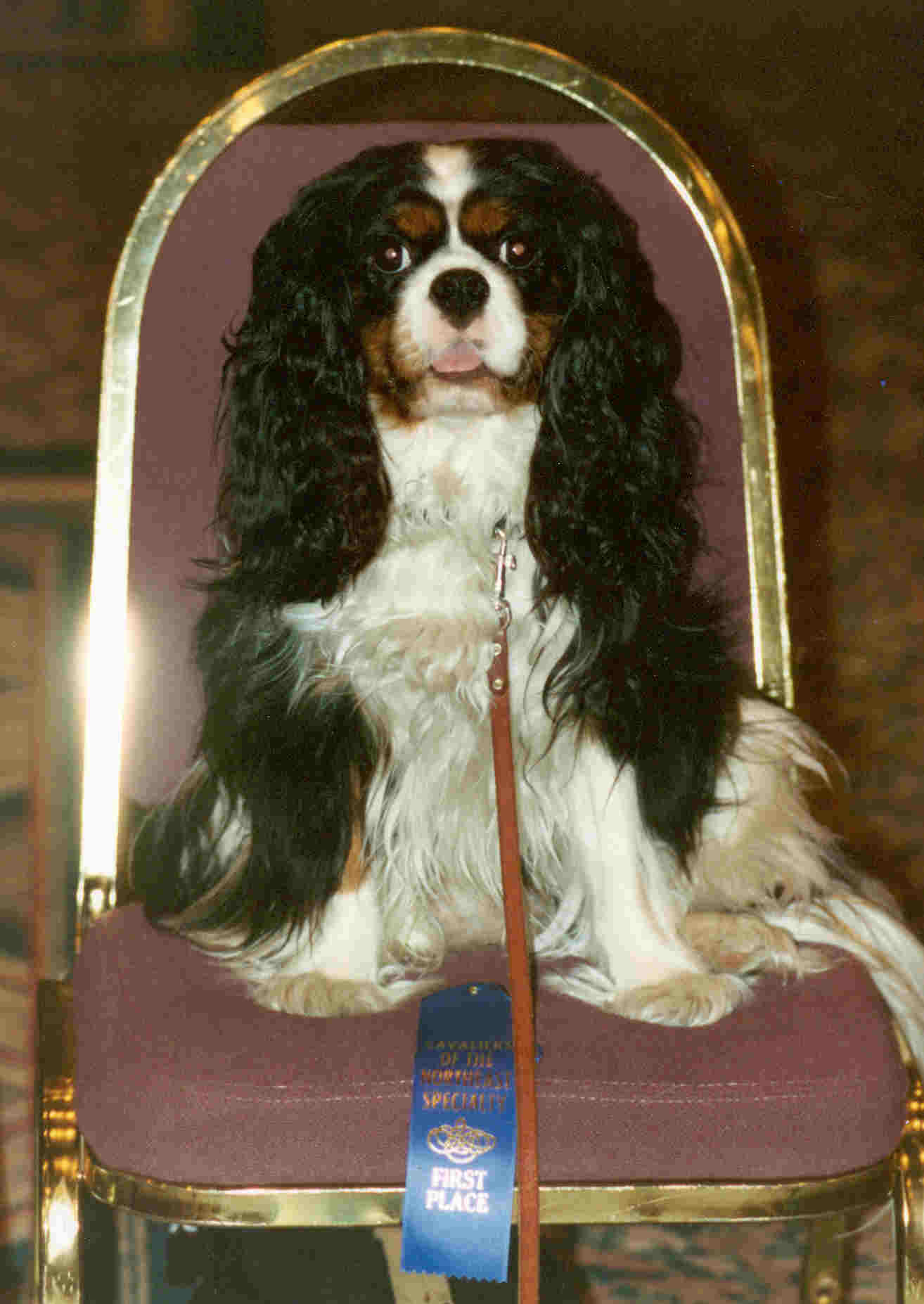 How
This Website Works
How
This Website Works - Dr. Google
- Cavalier's Average Lifespan
- Meaning of "Genetic" & "Inherited"
- Origin of the Breed
- Coat Colors
- The Blenheim Cavalier
- Mitral Valve Disease
- Syringomyelia
- Health Testing
- Blood Platelets
- Surrender to Rescue
- Conclusion
- Dean Koontz Quote
- Research News
- Veterinary Resources
CavalierHealth.org is dedicated to providing the Internet user with access to factual information about the major, severe health disorders afflicting the cavalier King Charles spaniel (CKCS) and that are presumed to be inherited, including mitral valve disease (MVD), syringomyelia (SM), hip dysplasia (HD), luxating patellas (knees), retinal dysplasia, and other debilitating and/or painful disorders to which the cavalier breed is predisposed. All of these diseases are listed in the left column of each page. The content of the website consists of compilations of information from many veterinary specialists and other sources knowledgeable about the CKCS.
Many of these disorders are present in other breeds of dogs, some to a greater extent than in the CKCS and some to the same or a lesser extent. We do not contend that all of these diseases are unique to cavaliers. But this website is only about the cavalier King Charles spaniel. Therefore, we focus on the extent to which these genetic disorders affect the cavalier, their symptoms, diagnoses, and treatments, and what breeders can and should do to try to lessen the existence of these diseases in future generations of cavaliers.*
*Some critics of this website contend that the length of the list of disorders in the left column is intended to overwhelm viewers with the sense that the cavalier King Charles spaniel is a chronically sickly breed and should be avoided. That is not an intent of this website, at all. The purpose of the list of the breed's recognized disorders, alphabetically by their various alternative names, is to enable cavalier owners to speed their search and find what they might be looking for, based upon any symptoms their cavaliers may be displaying.
CavalierHealth.org focuses upon the most severe traits, those that are lethal, painful, blinding, causing deafness, requiring lifetime treatment, or requiring surgery. There are literally dozens of other genetic defects which are prevalent in the cavalier King Charles spaniel but which are not classified as severe or life-threatening. And, thus far, the website has excluded some rarer disorders which CKCSs are believed to be predisposed to, such as various eosinophilic syndromes (other than eosinophilic stomatitis), myotonia, and lymphangiectasia.
 This website also excludes some very severe hereditary disorders which occur either at birth or during early puppy-hood and of which the puppy rarely survives or which are so noticeable that no breeder would attempt to pass off an afflicted cavalier as a healthy one. Such afflictions include parrot mouth (brachygnathism)
and wry mouth.
This website also excludes some very severe hereditary disorders which occur either at birth or during early puppy-hood and of which the puppy rarely survives or which are so noticeable that no breeder would attempt to pass off an afflicted cavalier as a healthy one. Such afflictions include parrot mouth (brachygnathism)
and wry mouth.
The cavalier King Charles spaniel has become increasingly popular in the United States over the last twenty years. While it had grown slowly but steadily in popularity between its arrival in the United States from England in 1952 until its introduction into the American Kennel Club in 1995, it was not until AKC's recognition that the numbers of litters of cavalier puppies per year began skyrocketing. Since the first year of AKC recognition, the number of AKC registrations of cavalier King Charles spaniels has increased by over 800%. The cavalier in 2024 was the 13th most popular breed in the AKC out of 201 breeds, up from the 70th most popular in 1997.
With its increased popularity has come extraordinary over-breeding, which, for the cavalier King Charles spaniel, may well prove to be its death knell.
While this website focuses upon the CKCS in the United States, the genetic diseases discussed here are worldwide, and no country's cavaliers are immune from the debilitating and/or life-shortening affects of these severe genetic disorders to which cavaliers' genes appear to be most susceptible.
RETURN TO TOP
How this website works
The CavalierHealth.org website has separate pages
for each major health issue affecting cavalier King
 Charles
spaniels (CKCSs). The names of the disorders are listed alphabetically
in the column at the left on each page. While this website has no
separate word search window, if you use your computer's "Find In Page"
or "Find On Page" or just "Find ..." box, just insert the word that best
describes the information you are searching for on that webpage.
Charles
spaniels (CKCSs). The names of the disorders are listed alphabetically
in the column at the left on each page. While this website has no
separate word search window, if you use your computer's "Find In Page"
or "Find On Page" or just "Find ..." box, just insert the word that best
describes the information you are searching for on that webpage.
When looking on-line for information about a specific disorder or symptom in your dog, try word-searching on Google. In the search box, enter "CavalierHealth.org" and add two or more keywords that describe the disorder or symptom. In a July 2022 veterinary research article in the Journal of Veterinary Internal Medicine, the investigators report that when veterinarians use Google to find information about particular symptoms or disorders they are unsure about, their search results "led to the generalist correcting earlier diagnoses suggesting that modeling how to search more like a specialist could be a useful strategy to consider." In short, "Dr. Google" works, even for veterinarians, when used thoughtfully.
If you have any questions or comments about the website, go to our "Contact Us" webpage to see how to communicate with us.
RETURN TO TOP
Dr. Google
 When a cavalier's owner suggests to the veterinarian what the dog's
disorder may be, a common sarcastic criticism made by some veterinarians
is that the owner has gone to "Dr. Google". What these vets may not
realize is that many cavalier owners know a lot about some
breed-specific disorders, either from having read articles on this
website or elsewhere on-line.
When a cavalier's owner suggests to the veterinarian what the dog's
disorder may be, a common sarcastic criticism made by some veterinarians
is that the owner has gone to "Dr. Google". What these vets may not
realize is that many cavalier owners know a lot about some
breed-specific disorders, either from having read articles on this
website or elsewhere on-line.
For example, far too many vets are unaware of the breed-specific cavalier disorder known as idiopathic asymptomatic thrombocytopenia. This disorder exists in more than 50% of CKCSs and is completely harmless, meaning it requires absolutely no medication or other treatment. Nevertheless, these vets assume that the dog is suffering from a very severe blood disorder requiring immediate infusions of heavy doses of immune-suppresing prednisolone. This totally unnecessary treatment has been known to kill cavaliers. See this clinical report, for example.
In our example, had the steroid-happy vet, who obviously was totally ignorant about this breed-specific benign disorder, done his own Google search using the search term "cavalier low platelets", he would have found the correct diagnosis in less than half a second. He should have taken the sound advice of board certified veterinary neurologist Dr. Clare Rusbridge, who stated in one of her YouTube videos:
“It is always worth doing a Google search for different breeds that you are not so familiar with just to see if there is any inherited diseases coming up.”
RETURN TO TOP
Cavalier's average lifespan
The cavalier breed is susceptible to 25 inherited disorders.
(See this
December 2009 article.)
Some severe hereditary disorders, such as mitral valve disease (MVD), are pervasive in
CKCSs. By age five years, over half of all cavalier King Charles spaniels are expected to have mitral valve murmurs, and that
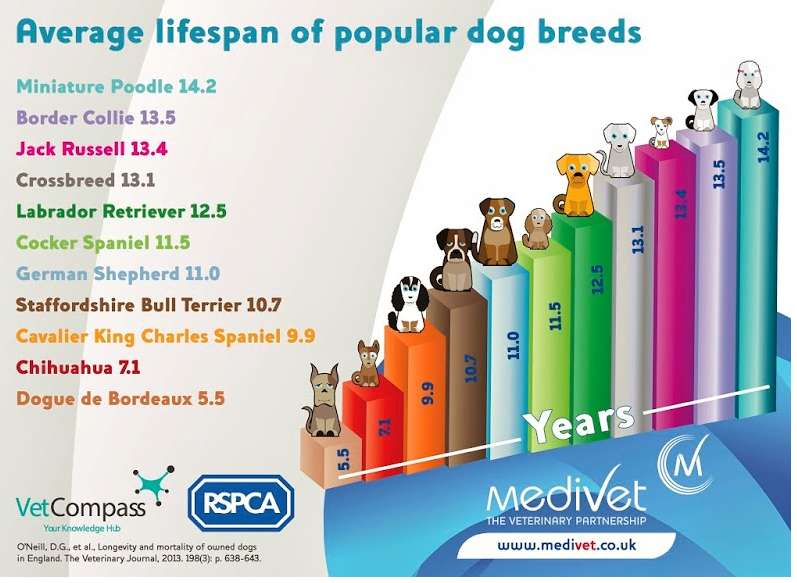 percentage increases to the point that among those that survive to age ten years, nearly all of them are predicted to have MVD. The expected lifespan of a CKCS can be quite short -- as young as seven years
to
an average of 9.75 years (See this
October 2018 article) -- the briefer lives due mainly to the terminal effect of early-onset mitral valve disease. Other disorders, such as hip dysplasia, should afflict one out of every four cavaliers. Still others, such as syringomyelia (SM), are progressing through the breed so rapidly that statistics have not been able to keep up with the pace. The current estimate of SM is over half of all cavaliers, and for its companion disorder, Chiari-like malformation, approaching 100% of all CKCSs.
percentage increases to the point that among those that survive to age ten years, nearly all of them are predicted to have MVD. The expected lifespan of a CKCS can be quite short -- as young as seven years
to
an average of 9.75 years (See this
October 2018 article) -- the briefer lives due mainly to the terminal effect of early-onset mitral valve disease. Other disorders, such as hip dysplasia, should afflict one out of every four cavaliers. Still others, such as syringomyelia (SM), are progressing through the breed so rapidly that statistics have not been able to keep up with the pace. The current estimate of SM is over half of all cavaliers, and for its companion disorder, Chiari-like malformation, approaching 100% of all CKCSs.
RETURN TO TOP
Origin of the breed
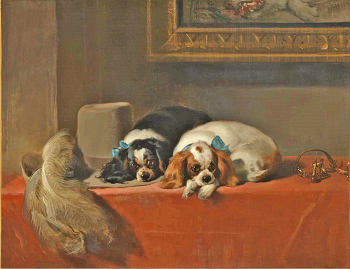 The
cavalier King Charles spaniel was created in Great Britian in the 1920s
as a longer-muzzled version of the King Charles spaniel (also known as
the English toy spaniel). This off-shoot breed commenced in response to
a £25 cash challenge offered to King Charles spaniel breeders at the
1926 through 1930 Cruft’s dog shows, by an American, Roswell Eldridge,
to recreate the look of the toy spaniel “of the Old Type” seen in
paintings of King Charles II (1630-1685).
The
cavalier King Charles spaniel was created in Great Britian in the 1920s
as a longer-muzzled version of the King Charles spaniel (also known as
the English toy spaniel). This off-shoot breed commenced in response to
a £25 cash challenge offered to King Charles spaniel breeders at the
1926 through 1930 Cruft’s dog shows, by an American, Roswell Eldridge,
to recreate the look of the toy spaniel “of the Old Type” seen in
paintings of King Charles II (1630-1685).
And so, this new breed, originally called the “Old Type King Charles spaniel”, sprung to life in 1926 from the previously long-faced “throw-out” puppies from King Charles spaniel litters. In 1928, it was given the name “cavalier”, in honor of the 1845 painting, The Cavalier’s Pets, by Sir Edwin Henry Landseer (right). To quote the UK club on the history of the breed:
“The Cavalier King Charles Spaniel of today is the direct descendant of the small Toy Spaniels seen in so many of the pictures of the 16th, 17th and 18th centuries. Toy Spaniels were quite common as pets of the Court ladies in Tudor times but in this country it was under the Stuarts that they were given the Royal title of King Charles Spaniels.”
Thus the cavalier King Charles spaniel is a breed created solely for its physical appearance, even though the breed’s temperament subsequently became considered “of paramount importance”.
For more information about the formation of the breed, read this book: Cavalier King Charles Spaniels – the Origin & Founding of the Breed, by Tina and Dennis Homes.
RETURN TO TOP
The cavaliers' various coat colors
There presently are four standard coat color combinations of the
CKCS: Blenheim (chestnut red and white), tricolor (black and white, with
tan markings), ruby (whole-colored chestnut red), and black-and-tan
(black
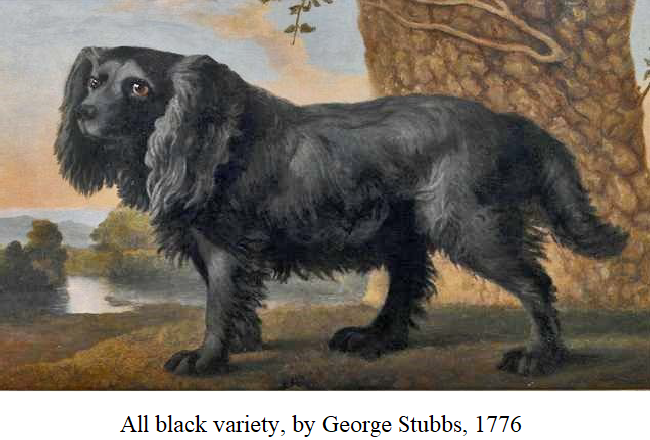 with tan markings). Historically, however, there have been more
than just these four colors. There have been at least three (the black-&-white, the
brown-&-white, and the all-black) and maybe a couple more variations, and they have
existed in cavaliers’ ancestors long before the CKCS was recognized as a
distinct breed in the UK in 1945.
with tan markings). Historically, however, there have been more
than just these four colors. There have been at least three (the black-&-white, the
brown-&-white, and the all-black) and maybe a couple more variations, and they have
existed in cavaliers’ ancestors long before the CKCS was recognized as a
distinct breed in the UK in 1945.
Among 18 cavaliers registered with the UK’s club in May 1945, two were brown-&-whites and one was a black-&-white, comprising 17% of the registrations. And, these off-color cavaliers even were registered and shown in UK conformation shows as late as the 1970s. In 1971, Mrs. Amice Pitt of the UK club wrote of her preference for the now-recognized four color combinations, and since then all CKCS breed standards have adhered to her choices. Read more about the history of the cavalier's coat colors here.
In the 19th century and very early 1900s in the UK, the cavalier's predecessor breed was called the English Toy Spaniel, and each color variety had a separate name. For example, according to books published in 1899 and 1915, the UK breed standard of the "Toy Spaniels (English)" listed these colors by these names:
• Black and tan – "King Charles"
• Chestnut red – "Ruby"
• White and chestnut red – "Blenheim"
• Tri-colour (tan, black, and white) – "Charles the First" or "Prince Charles"
An 1891 book describing the American toy spaniel referred to the same names for each of these colors.
RETURN TO TOP
The Blenheim cavalier
 The Blenheim color
(chestnut red and white) is named after Blenheim Palace, the
ancestral home of the Dukes of Marlborough, who for over 200 years had
kept and raised small spaniels which were called Marlborough spaniels
and evolved in the 19th century into the appearance of the cavalier King
Charles spaniels which Roswell Eldridge called the "Old Type".
The Blenheim color
(chestnut red and white) is named after Blenheim Palace, the
ancestral home of the Dukes of Marlborough, who for over 200 years had
kept and raised small spaniels which were called Marlborough spaniels
and evolved in the 19th century into the appearance of the cavalier King
Charles spaniels which Roswell Eldridge called the "Old Type".
In the 1920s, the 9th Duke's wife, Duchess of Marlborough, Gladys Deacon, raised several generations of King Charles spaniels with the kennel name Blenheim Palace. One such bitch, Blenheim Palace Poppet (right), a chestnut red and white female, became an important foundation bitch for the Plantation line of cavalier King Charles spaniels of the 1930s and 1940s.
RETURN TO TOP
Mitral Valve Disease (MVD)
The terminal heart disorder MVD is a painful disease for a cavalier to experience, and it is a painful disease for a cavalier owner to witness. It usually results in a premature and agonizing death for the dog, and years of heartbreak for its owners.
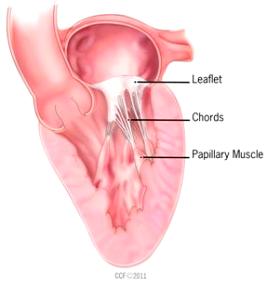 In the 1990s, a dedicated group of veterinary cardiologists and
geneticists began examining the extremely high incidence of mitral valve
disease in cavaliers. They found that MVD was over twenty times more
likely to occur in cavalier King Charles spaniels than in any other
breed, and that by age 5 years, over half of all cavaliers may be
expected to have MVD heart murmurs. By age 10 years, 100% of CKCSs in
their studies had such heart murmurs.
In the 1990s, a dedicated group of veterinary cardiologists and
geneticists began examining the extremely high incidence of mitral valve
disease in cavaliers. They found that MVD was over twenty times more
likely to occur in cavalier King Charles spaniels than in any other
breed, and that by age 5 years, over half of all cavaliers may be
expected to have MVD heart murmurs. By age 10 years, 100% of CKCSs in
their studies had such heart murmurs.
These canine heart experts devised a set of breeding rules, called the MVD Breeding Protocol, in 1997 and 1998. The MVD Protocol was unveiled by a panel of these experts to American cavalier breeders at a symposium in May 1998 sponsored by the Cavalier King Charles Spaniel Club, USA. The MVD Protocol called for breeders to limit breeding to only those cavaliers which were at least 5 years old and with hearts clear of MVD murmurs (as diagnosed by board certified veterinary cardiologists). The only exception in the MVD Protocol was to allow the breeding of dogs as young as 2.5 years old if both of the cavalier's parents' hearts were clear of murmurs by age 5 years. Under the leadership of its then president, C. Anne Eckersley-Robins, the board of directors of the Cavalier King Charles Spaniel Club, USA endorsed the MVD Protocol in 1998.
This MVD Protocol was expected to drastically reduce and possibly eliminate mitral valve disease in cavaliers under the age of 5 years (called early-onset MVD) over as few as two to three breeding generations. However, the MVD Protocol required that cavalier breeders drastically alter their breeding practices, since nearly all such breeders typically began breeding their cavaliers as young as 1 year of age.
Unfortunately, the overwhelming majority of breeders of cavalier King Charles spaniels in the United States have ignored the MVD Protocol and, instead, have increased the breedings of their underaged cavaliers to meet the ever-increasing demand of the puppy marketplace. In addition, since the American Kennel Club officially recognized the breed in 1995, numerous breeders of other AKC breeds have added cavalier King Charles spaniels to their breeding kennels, without proper awareness or concern about MVD or any of the severe genetic disorders common to the CKCS. Also, in recent years the commercial puppy millers, who breed indiscriminately without any thought of health testing, and sell their puppies nationwide through pet shops and the Internet, have added the MVD-cursed cavalier to their inventory of breeds.
As a result, instead of eliminating early-onset MVD in cavaliers within two to three generations (a generation being 2.5 years) in the 18 years since 1998, the cavalier King Charles spaniel has made no progress in its battle against mitral valve disease, and instead, has regressed.
A panel of ten of the top board certified veterinary cardiologists reported in November 2009 that every cavalier King Charles spaniel is at high risk for developing MVD. They recommend that all CKCSs be screened for mitral valve murmurs every year.
RETURN TO TOP
Syringomyelia (SM)
In recent years, syringomyelia has become a major crippler of cavalier King Charles spaniels. SM is an extremely serious genetic spinal disease which is widespread and believed to affect cavaliers of all bloodlines. The number of diagnosed cases has increased dramatically since 2000.
SM progresses from a cavalier feeling hypersensitivity in its neck area, with an uncontrollable urge to scratch at its neck and shoulders, to severe pain around its head, neck, and shoulders, causing it yelp or scream, followed by destruction of portions of the cavalier's spinal cord. SM is so painful that the affected dog may contort its neck and even sleep and eat only with its head held high. Some cavaliers lose full use of their limbs and bladder and bowel control; others deteriorate to the point of paralysis.
Syringomyelia is so widespread in CKCS bloodlines, that the number of potential carriers is huge, and breeding programs based upon avoiding SM carriers is impossible. Researchers now estimate up to 95% of all cavalier King Charles spaniels have Chiari-like malformation (CM), the skull malformation believed to be a part of the cause of syringomyelia, and that up to 50% of cavaliers have SM.
As with MVD, experts have devised an SM Breeding Protocol, which includes eliminating SM affected dogs -- based upon clinical signs and magnetic resonance imaging (MRI) -- from breeding programs, and carefully breeding the others depending upon whether or not they are known carriers of the disease. Participation by cavalier breeders in following this breeding protocol has been minimal.
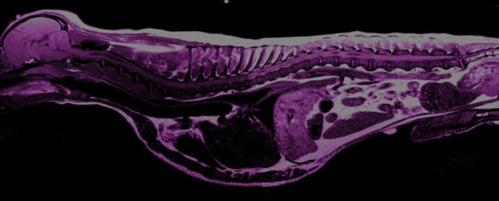
RETURN TO TOP
Health Testing
 The term, "health testing" is used quite a bit on this website.
The nature of a particular health test on a cavalier King Charles
spaniel depends upon the nature of the genetic disorder:
The term, "health testing" is used quite a bit on this website.
The nature of a particular health test on a cavalier King Charles
spaniel depends upon the nature of the genetic disorder:
• Mitral valve disease (MVD) requires an annual examination by a board certified veterinary cardiologist, using a stethoscope or Doppler or x-ray. See Cardiologists for a list of the board certified veterinary cardiologists in the United States, and Clinics for a list of low cost heart testing clinics currently scheduled in the United States.
• Hip dysplasia (HD) requires an examination by a board certified veterinary radiologist, using x-rays. See Clinics for a list of low cost x-ray clinics currently scheduled in the United States.
• Patellas require manipulation by a veterinarian. See Clinics for a list of low cost patella testing clinics currently scheduled in the United States.
 • Retinal
dysplasia, cataracts, and the other
eye-related disorders
require an examination by a board certified veterinary ophthalmologist.
See Clinics
for a list of low cost eye testing clinics currently scheduled in the
United States.
• Retinal
dysplasia, cataracts, and the other
eye-related disorders
require an examination by a board certified veterinary ophthalmologist.
See Clinics
for a list of low cost eye testing clinics currently scheduled in the
United States.
• Syringomyelia (SM) suggests an MRI examination or a physical examination conducted by a veterinary neurologist. See Neurologists for a list of the board certified veterinary neurologists in the United States.
• Many of the other genetic diseases require blood analysis by specialist veterinarians. See Clinics for a list of low cost blood testing clinics currently scheduled in the United States.
Some tests need be conducted only once in a cavalier's life, such as hip dysplasia x-rays and SM exams. Others must be performed annually or even more frequently, such as MVD exams, patella manipulations, blood tests, and eye examinations. If a genetic disorder calls for annual examinations, then reports and certificates older than one year are stale and not pertinent to the cavalier's present state of genetic health. The timing of examinations of other diseases, such as diabetes mellitus, epilepsy, and episodic falling syndrome, depend upon the symptoms displaying themselves.
RETURN TO TOP
 Blood Platelets
Blood Platelets
Over half of all cavalier King Charles spaniels may have both an abnormally low number of blood platelets and oversized platelets. Despite the low platelet counts, the typical cavalier's blood platelets function normally, and the dog does not appear to experience any health problems due to either the size or fewer numbers of its platelets. There are, however, exceptions to this typical situation.
Excessively low platelet counts normally is a sign which tends to alarm general practice veterinarians, and so it is vitally important that cavalier owners alert their vets about this benign condition in the breed when blood tests are ordered.
Download this pdf file and take it to your veterinarians, to be sure they know about this benign blood platelet condition and do not become alarmed.
RETURN TO TOP
Surrender to Rescue
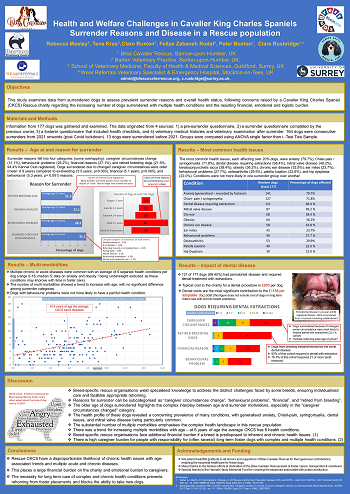 At the March 2024 BSAVA 2024 conference, UK researchers Rebecca
Mosley, Tena Kras, Clare Buxton, Felipe Zabaneh Rodal, Peter Buxton, and Clare Rusbridge presented a poster (at
right -- click to enlarge it) examining the reasons 177 cavailer
King Charles spaniels were surrendered by their owners to a UK canine
rescue group,
Bliss Cavalier Rescue. The data was collected from a
combination of questionnaires, health checklists, veterinary medical
histories, and veterinary examinations following surrender. The owners'
reasons for surrender included:
At the March 2024 BSAVA 2024 conference, UK researchers Rebecca
Mosley, Tena Kras, Clare Buxton, Felipe Zabaneh Rodal, Peter Buxton, and Clare Rusbridge presented a poster (at
right -- click to enlarge it) examining the reasons 177 cavailer
King Charles spaniels were surrendered by their owners to a UK canine
rescue group,
Bliss Cavalier Rescue. The data was collected from a
combination of questionnaires, health checklists, veterinary medical
histories, and veterinary examinations following surrender. The owners'
reasons for surrender included:
• Caregiver circumstances change: 31.1%, average age 6.9 years
• Behavioral problems: 28.2%, average age 5.3 years
• Financial reasons: 27.1%, average age 5.1 years
• Retired breeding dog: 21.5%, average age 5.5 years
Of the cavalier breeders who surrendered their breeding stock to the rescue group, 94.4% were registered with the UK Kennel Club. At the date of surrender, these cavaliers by age 6 years had an average of 6 physical health conditions (excluding anxiety, obesity, and underweight), referred to in the study as multi-morbidities. The most common health conditions were:
• Anxiety: 141 dogs (79.7%)
• Chiari-like malformation with pain: 127 dogs (71.8%)
• Dental disease requiring extractions: 121 dogs (68.45%)
• Mitral valve disease: 87 dogs (49.2%)
• Dry eye: 68 dogs (38.4%)
• Obesity: 64 dogs (36.2%)
• Chronic ear disease: 58 dogs (32.8%)
• Ear mites: 42 dogs (23.7%)
• Behavioraly problems: 49 dogs (27.7%)
• Osteoarthritis: 53 dogs (29.9%)
• Patella luxation: 40 dogs (22.6%)
• Hip dysplasia: 39 dogs (22.0%)
The researchers highlighted the details regarding dental disease. As noted, 68.45% of the surrendered cavaliers had periodontal disease which required dental treatment, including extractions. They found that retired breeding stock cavaliers surrendered by breeders had the worst cases of dental disease, of which 92% required tooth extractions, with 76.3% requiring 21 or more teeth removed.
RETURN TO TOP
Conclusion
 At a time when the cavalier King Charles spaniel breeder should be
cautious and should choose to not breed underaged dogs and untested
dogs, in order to reduce the incidence of MVD and SM and several other
progressive and worsening hereditary diseases, we find that most
cavalier breeders choose to breed their dogs younger, breed them more
often, and either not fully test them for these genetic defects or
ignore unfavorable test results and breed them anyway.
At a time when the cavalier King Charles spaniel breeder should be
cautious and should choose to not breed underaged dogs and untested
dogs, in order to reduce the incidence of MVD and SM and several other
progressive and worsening hereditary diseases, we find that most
cavalier breeders choose to breed their dogs younger, breed them more
often, and either not fully test them for these genetic defects or
ignore unfavorable test results and breed them anyway.
As recently as 2009, the chairman of the UK's Cavalier King Charles Spaniel Club stated: "There are many members who are still not prepared to health check their breeding stock, and of those who do, it would appear that many would not hesitate to breed from affected animals." And so it goes ...
The cavalier puppy buyer needs to beware of these numerous irresponsible breeders. There are very few responsible, ethical breeders of cavalier King Charles spaniels who actually do the right thing. Many will tell you that they are responsible, that they test their breeding stock, that they follow the breeding protocols, that they are doing whatever can be done to reduce severe genetic disorders in their breeding programs. But very, very few are truthful and actually do what they say they do. It is a Buyer Beware World in the cavalier King Charles spaniel marketplace.

RETURN TO TOP
Research News
January 2025:
Cavaliers are singled out in a call for re-opening breed
registries and re-writing breed standards.
 In
a January 2025 article,
noted animal welfare educators (Helle Friis Proschowsky, Maja Louise
Arendt, Brenda N. Bonnett, Camilla S. Bruun, Irena Czycholl, Merete
Fredholm, Dan O’Neill, James A. Serpell, Peter Sandøe [right])
single out cavalier King Charles spaniels and a few other breeds with
hereditary health issues and call for "a new future for dog breeding",
including having kennel clubs re-open breed registries and remove
wording from breed standards that promote extreme conformation, and
support selection against disease-predisposing genotypes and phenotypes
and refocus dog showing and breeding to promote health. The cavalier is
condemned specifically for mitral valve disease and its short, rounded
skull associated with syringomyelia.
In
a January 2025 article,
noted animal welfare educators (Helle Friis Proschowsky, Maja Louise
Arendt, Brenda N. Bonnett, Camilla S. Bruun, Irena Czycholl, Merete
Fredholm, Dan O’Neill, James A. Serpell, Peter Sandøe [right])
single out cavalier King Charles spaniels and a few other breeds with
hereditary health issues and call for "a new future for dog breeding",
including having kennel clubs re-open breed registries and remove
wording from breed standards that promote extreme conformation, and
support selection against disease-predisposing genotypes and phenotypes
and refocus dog showing and breeding to promote health. The cavalier is
condemned specifically for mitral valve disease and its short, rounded
skull associated with syringomyelia.
March 2024:
Cavaliers surrendered to Bliss Cavalier Rescue averaged 6 health
issues each by age 6 years.
 At the March 2024 BSAVA 2024 conference, UK researchers Rebecca
Mosley, Tena Kras, Clare Buxton, Felipe Zabaneh Rodal, Peter Buxton, and Clare Rusbridge presented a poster (at
right -- click to enlarge it) examining the reasons 177 cavalier
King Charles spaniels were surrendered by their owners to a UK canine
rescue group, Bliss Cavalier Rescue. The data was collected from a
combination of questionnaires, health checklists, veterinary medical
histories, and veterinary examinations following surrender. The owners'
reasons for surrender included:
At the March 2024 BSAVA 2024 conference, UK researchers Rebecca
Mosley, Tena Kras, Clare Buxton, Felipe Zabaneh Rodal, Peter Buxton, and Clare Rusbridge presented a poster (at
right -- click to enlarge it) examining the reasons 177 cavalier
King Charles spaniels were surrendered by their owners to a UK canine
rescue group, Bliss Cavalier Rescue. The data was collected from a
combination of questionnaires, health checklists, veterinary medical
histories, and veterinary examinations following surrender. The owners'
reasons for surrender included:
• Caregiver circumstances change: 31.1%, average age 6.9 years
• Behavioral problems: 28.2%, average age 5.3 years
• Financial reasons: 27.1%, average age 5.1 years
• Retired breeding dog: 21.5%, average age 5.5 years
Of the cavalier breeders who surrendered their breeding stock to the rescue group, 94.4% were registered with the UK Kennel Club. Overall at the date of surrender, the cavaliers by age 6 years had an average of 6 physical health conditions (excluding anxiety, obesity, and underweight), referred to in the study as multi-morbidities. The most common health conditions were:
• Anxiety: 141 dogs (79.7%)
• Chiari-like malformation with pain: 127 dogs (71.8%)
• Dental disease requiring extractions: 121 dogs (68.45%)
• Mitral valve disease: 87 dogs (49.2%)
• Dry eye: 68 dogs (38.4%)
• Obesity: 64 dogs (36.2%)
• Chronic ear disease: 58 dogs (32.8%)
• Ear mites: 42 dogs (23.7%)
• Behavioraly problems: 49 dogs (27.7%)
• Osteoarthritis: 53 dogs (29.9%)
• Patella luxation: 40 dogs (22.6%)
• Hip dysplasia: 39 dogs (22.0%)
The researchers highlighted the details regarding dental disease. As noted, 68.45% of the surrendered cavaliers had periodontal disease which required dental treatment, including extractions. They found that retired breeding stock cavaliers surrendered by breeders had the worst cases of dental disease, of which 92% required tooth extractions, with 76.3% requiring 21 or more teeth removed.
February 2024:
Cavaliers' median age at death is 11.8 years in UK
study of 6,879 deceased dogs.
 In a
Februaty 2024 article conducted by
DogsTrust, a charitable trust for "dogs in need", researchers Kirsten M.
McMillan (right), Jon Bielby, Carys L. Williams, Melissa M. Upjohn, Rachel A.
Casey, and Robert M. Christley, examined a dataset of 584,734 UK dogs of
155 breeds, including 20,661 cavalier King Charles spaniels, to
determine the median age of each breed at the age at death. They
calculated the median age at death of all dogs to be 12.5 years. Of the
6,879 deceased cavaliers in the study, their median age at death was
11.8 years.
In a
Februaty 2024 article conducted by
DogsTrust, a charitable trust for "dogs in need", researchers Kirsten M.
McMillan (right), Jon Bielby, Carys L. Williams, Melissa M. Upjohn, Rachel A.
Casey, and Robert M. Christley, examined a dataset of 584,734 UK dogs of
155 breeds, including 20,661 cavalier King Charles spaniels, to
determine the median age of each breed at the age at death. They
calculated the median age at death of all dogs to be 12.5 years. Of the
6,879 deceased cavaliers in the study, their median age at death was
11.8 years.
EDITOR'S NOTE: A median age of death of 11.8 years is quite surprising, since the most recent previous estimate of UK dogs, in 2018, was 9.75 years. This current estimate is more than 2 years longer than the 2018 study finding. To what can we attribute this good news about longer survival ages? We can ony guess, but here are a few guesses:
• Advances in medical care
• More awareness of the onset of cavalier-related diseases, such as MVD and CM/SM
• More UK breeders following breeding protocols
• Different data sources being used
July 2022:
Dr. Google works when used with well-crafted veterinary
search terms.
 In a
July 2022 article in the Journal of Veterinary Internal
Medicine, USA veterinary researchers (E. Carley Allen, Kristine M. Alpi,
George W. Schaaf, Steven L. Marks) studied whether and how using Google
could assist veterinarians in the diagnosis of complex cases. A
veterinary generalist with 3 years of experience and a specialist with
26 years were tested by reviewing a set of 30 previously published
clinical case studies (17 dogs and 13 cats) with the actual diagnoses
hidden, and told to give diagnoses based only upon that information.
They correctly diagnosed only 10 of the 30 cases, prior to reseaching
on-line using Google. They agreed with each other on only 6 of the
correctly diagnosed cases. They then searched Google using 3 to 5 search
terms of keywords to find information to compare with their own
diagnoses of the cases. Their assignment was:
In a
July 2022 article in the Journal of Veterinary Internal
Medicine, USA veterinary researchers (E. Carley Allen, Kristine M. Alpi,
George W. Schaaf, Steven L. Marks) studied whether and how using Google
could assist veterinarians in the diagnosis of complex cases. A
veterinary generalist with 3 years of experience and a specialist with
26 years were tested by reviewing a set of 30 previously published
clinical case studies (17 dogs and 13 cats) with the actual diagnoses
hidden, and told to give diagnoses based only upon that information.
They correctly diagnosed only 10 of the 30 cases, prior to reseaching
on-line using Google. They agreed with each other on only 6 of the
correctly diagnosed cases. They then searched Google using 3 to 5 search
terms of keywords to find information to compare with their own
diagnoses of the cases. Their assignment was:
“What terms (up to 5) would you search online to find the diagnosis or differentials for this case? Terms can be phrases or single words; please use 1 line for each term. If you would search a term as a phrase, please put the term in quotes for the purpose of this question (eg, ‘firm subcutaneous mass’).”
Using their Google research results, the generalist correctly diagnosed "4 challenging cases", and the specialist revised diagnoses of 5 others. The authors concluded:
“Veterinary information resources discoverable by searching Google can assist veterinarians to either reinforce initial diagnosis or consider other diagnoses for complicated or unusual cases. ... [w]e believe that searching on case features is widely done and should be further investigated as a strategy to support generalist practitioners confronted with complex cases. ... [T]he search results generated from terms searched by the specialist veterinarian led to the generalist correcting earlier diagnoses suggesting that modeling how to search more like a specialist could be a useful strategy to consider.”
 EDITOR'S
NOTE: In short, "Dr. Google" works when used thoughtfully.
When looking on-line for information about a specific disorder or
symptom in your cavalier, try word-searching this website on Google. In the search box,
enter "CavalierHealth.org" and add two or more keywords that describe
the disorder or symptom.
EDITOR'S
NOTE: In short, "Dr. Google" works when used thoughtfully.
When looking on-line for information about a specific disorder or
symptom in your cavalier, try word-searching this website on Google. In the search box,
enter "CavalierHealth.org" and add two or more keywords that describe
the disorder or symptom.
Interestingly, even though snobbish veterinarians are quick to demean dog owners who use the Internet to find answers to their questions about their dogs' conditions, the researchers here stated that "we believe that searching on case features is widely done [by veterinarians themselves] and should be further investigated as a strategy to support generalist practitioners confronted with complex cases."
October 2018:
UK Kennel Club cavaliers' average lifespan drops to 9.75 years
in 2014.
 In
an
October 2018 article, UK veterinary researchers (T. W. Lewis, B. M.
Wiles, A. M. Llewellyn-Zaidi, K. M. Evans, D. G. O’Neill) examined the
death reports of 5,663 UK Kennel Club registered dogs in 2014, including
222 cavalier King Charles spaniels. They report that the median age of
death of CKCSs that year was 117 months (9.75 years). This is a
downgrade from the median age of 9.9 years in a similar study of 124
deceased cavaliers published in
December
2013. Cardiac events were the most prevalent of causes of death for
cavaliers, at 30.63%, whereas cardiac deaths for all breeds of dogs that
year were only 7.82%.
In
an
October 2018 article, UK veterinary researchers (T. W. Lewis, B. M.
Wiles, A. M. Llewellyn-Zaidi, K. M. Evans, D. G. O’Neill) examined the
death reports of 5,663 UK Kennel Club registered dogs in 2014, including
222 cavalier King Charles spaniels. They report that the median age of
death of CKCSs that year was 117 months (9.75 years). This is a
downgrade from the median age of 9.9 years in a similar study of 124
deceased cavaliers published in
December
2013. Cardiac events were the most prevalent of causes of death for
cavaliers, at 30.63%, whereas cardiac deaths for all breeds of dogs that
year were only 7.82%.
December 2013:
VetCompass finds the average lifespan of cavaliers in the UK is
9.9 years. UK's Royal Veterinary College's Veterinary Companion Animal
Surveillance System (VetCompass) project
 researchers
( D G O'Neill, D B Church, P D McGreevy, P C Thomson, D C Brodbelt) find
in a
December 2013 report that of 124 deceased cavalier King Charles
spaniels in the United Kingdom, their average lifespan was 9.9 years.
Tjhe overall median lifespan of all dogs in the study was 12.0 years.
researchers
( D G O'Neill, D B Church, P D McGreevy, P C Thomson, D C Brodbelt) find
in a
December 2013 report that of 124 deceased cavalier King Charles
spaniels in the United Kingdom, their average lifespan was 9.9 years.
Tjhe overall median lifespan of all dogs in the study was 12.0 years.
RETURN TO TOP
Veterinary Resources
Breed Longevity Data. Kelly M. Cassidy. 2008.
Inherited defects in pedigree dogs. Part 1: Disorders related to breed standards. Lucy Asher, Gillian Diesel, Jennifer F. Summers, Paul D. McGreevy, Lisa M. Collins. Vet. J. December 2009;182(3):402-411. Quote: The United Kingdom pedigree-dog industry has faced criticism because certain aspects of dog conformation stipulated in the UK Kennel Club breed standards have a detrimental impact on dog welfare. A review of conformation-related disorders was carried out in the top 50 UK Kennel Club registered breeds using systematic searches of existing information. A novel index to score severity of disorders along a single scale was also developed and used to conduct statistical analyses to determine the factors affecting reported breed predisposition to defects. [Cavalier King Charles spaniel: total disorders: 25.] ... Some large breeds are also reportedly predisposed to valvular disease (e.g. German Shepherd Dog), however, mitral valve disease (severity: 7–12) is more commonly associated with small dog breeds (Borgarelli et al., 2004), particularly the Cavalier King Charles spaniel. The prevalence estimates for mitral valve disease in the Cavalier King Charles spaniel range between 11–45% (Hyun, 2005; Haggstrom et al., 1992; Darke, 1987). ... According to the literature searched, each of the top 50 breeds was found to have at least one aspect of its conformation predisposing it to a disorder; and 84 disorders were either directly or indirectly associated with conformation. The Miniature poodle, Bulldog, Pug and Basset hound had most associations with conformation-related disorders. Further research on prevalence and severity is required to assess the impact of different disorders on the welfare of affected breeds.
Longevity and mortality of owned dogs in England. D G O'Neill, D B Church, P D McGreevy, P C Thomson, D C Brodbelt. Vet. J. December 2013;189(3):638-643. Quote: Average lifespan of popular dog breeds ... Cavalier King Charles Spaniel 9.9 years.
Prevalence of disorders recorded in Cavalier King Charles Spaniels attending primary-care veterinary practices in England. Jennifer F Summers, Dan G O’Neill, David B Church, Peter C Thomson, Paul D McGreevy, David C Brodbelt. Canine Genetics & Epidem. April 2015; doi: 10.1186/s40575-015-0016-7. Background: Concerns have been raised over breed-related health issues in purebred dogs, but reliable prevalence estimates for disorders within specific breeds are sparse. Electronically stored patient health records from primary-care practice are emerging as a useful source of epidemiological data in companion animals. This study used large volumes of health data from UK primary-care practices participating in the VetCompass animal health surveillance project to evaluate in detail the disorders diagnosed in a random selection of over 50% of dogs recorded as Cavalier King Charles Spaniels (CKCSs). Confirmation of breed using available microchip and Kennel Club (KC) registration data was attempted. Results: In total, 3624 dogs were recorded as CKCSs within the VetCompass database of which 143 (3.9%) were confirmed as KC-registered via microchip identification linkage of VetCompass to the KC database. 1875 dogs (75 KC registered and 1800 of unknown KC status, 52% of both groups) were randomly sampled for detailed clinical review. Clinical data associated with veterinary care were recorded in 1749 (93.3%) of these dogs. The most common specific disorders recorded during the study period were heart murmur (541 dogs, representing 30.9% of study group), diarrhoea of unspecified cause (193 dogs, 11.0%), dental disease (166 dogs, 9.5%), otitis externa (161, 9.2%), conjunctivitis (131, 7.4%) and anal sac infection (129, 7.4%). The five most common disorder categories were cardiac (affecting 31.7% of dogs), dermatological (22.2%), ocular (20.6%), gastrointestinal (19.3%) and dental/ periodontal disorders (15.2%). Discussion and conclusions: Study findings suggest that many of the disorders commonly affecting CKCSs are largely similar to those affecting the general dog population presented for primary veterinary care in the UK. However, cardiac disease (and MVD in particular) continues to be of particular concern in this breed. Further work: This work highlights the value of veterinary practice based breed-specific epidemiological studies to provide targeted and evidence-based health policies. Further studies using electronic patient records in other breeds could highlight their potential disease predispositions.
2014 UK Kennel Club, Cavalier King Charles Spaniel, Pedigree Breed Health Survey The Kennel Club. April 2016. Quote: [O]verall median age at death was 10 years; mean age at death was 9.68 years.
Longevity and mortality in Kennel Club registered dog breeds in the UK in 2014. T. W. Lewis, B. M. Wiles, A. M. Llewellyn-Zaidi, K. M. Evans, D. G. O’Neill. Canine Genetics & Epidem. October 2018;5:10. Quote: Background: The domestic dog is one of the most diverse mammalian species, exhibiting wide variations in morphology, behaviour and morbidity across breeds. Therefore, it is not unexpected that breeds should also exhibit variation in mortality and longevity. While shorter longevity per se may not necessarily be a welfare issue, a generally foreshortened lifespan in a breed that is accompanied by a high prevalence of a particular cause of death may reveal potentially serious welfare concerns and highlight scope to improve breed welfare. Survey data gathered directly from owners offer useful insights into canine longevity and mortality that can support the overall evidence base for welfare reforms within breeds. Results: Mortality data on 5663 deceased dogs [222 cavalier King Charles spaniels] registered with the UK Kennel Club were collected from an owner-based survey. The most commonly reported causes of death were old age (13.8%), unspecified cancer (8.7%) and heart failure (4.9%) [CKCSs: 19.82%] with 5.1% of deaths reported as unknown cause. Overall median age at death was 10.33 years [CKCS: 9.75 years](interquartile range: 7.17–12.83 years). Breeds varied widely in median longevity overall from the West Highland Terrier (12.71 years) to the Dobermann Pinscher (7.67 years). There was also wide variation in the prevalence of some common causes of death among breeds, and in median longevity across the causes of death. ... Many of these associations concur with previous reports in these breeds. For example, our study determined a higher proportional mortality from cardiac disorders in the Cavalier King Charles Spaniel (WBPM of 19.82% for heart failure and 10.81% for cardiomyopathy compared to the OPM of 4.89% and 2.93% respectively) which is concordant with previous reports that cardiac conditions were the most common cause of death in this breed. ... Conclusion: Substantial variation in the median lifespan and the prominent causes of death exists across breeds. This study has identified some breeds with both a low median lifespan and also a high proportional mortality for one or more specific causes of death that should be considered as both potential welfare concerns as well as opportunities for improvement.
Googling for a veterinary diagnosis: A replication study using Google as a diagnostic aid. E. Carley Allen, Kristine M. Alpi, George W. Schaaf, Steven L. Marks. J. Vet. Intern. Med. July 2022; doi: 10.1111/jvim.16484. Quote: Background: The purpose of this study was to replicate in the veterinary context a BMJ study using Google to assist in diagnosis of complex cases. Hypothesis/Objectives: To assess percentage of diagnoses identified using Google as a diagnostic aid in veterinary medicine. Animals: None; 13 cases in cats and 17 in dogs published in JAVMA. Methods: Cross-sectional survey of Google results from searches using keywords generated independently by a generalist and a specialist veterinarian who reviewed the published case history and diagnostic components while blind to the diagnosis. They offered diagnoses and generated up to 5 search strategies for each case. The top 30 Google results for each search were reviewed by the generalist to inform a final Google-aided diagnosis. Both veterinarians' initial diagnoses and the Google-aided diagnoses were compared with the published diagnoses. Results: Google searching led to 52 diagnoses out of 60 possible. Twenty-two (42%, 95% confidence interval [95% CI] 29%-55%) Google-aided diagnoses matched the JAVMA diagnosis. This accuracy rate does not differ significantly from 58% (n = 15/26, 95% CI 38%-77%) identified in the BMJ study. Google-aided results were not statistically different from those achieved unaided by each veterinarian (33%, 95% CI 16%-50%). Conclusions and Clinical Importance: Published information found searching Google using keywords related to complicated or unusual cases could assist veterinarians to reinforce their initial diagnosis or consider other differential diagnoses. Search strategies using words representing either signs or the preliminary diagnoses can yield results useful to confirming a correct diagnosis. ... Veterinary information resources discoverable by searching Google can assist veterinarians to either reinforce initial diagnosis or consider other diagnoses for complicated or unusual cases. ... [w]e believe that searching on case features is widely done and should be further investigated as a strategy to support generalist practitioners confronted with complex cases. ... [T]he search results generated from terms searched by the specialist veterinarian led to the generalist correcting earlier diagnoses suggesting that modeling how to search more like a specialist could be a useful strategy to consider.
Longevity of companion dog breeds: those at risk from early death. Kirsten M. McMillan, Jon Bielby, Carys L. Williams, Melissa M. Upjohn, Rachel A. Casey, Robert M. Christley. Sci. Rpts. February 2024; doi: 10.1038/s41598-023-50458-w. Quote: The companion dog is one of the most phenotypically diverse species. Variability between breeds extends not only to morphology and aspects of behaviour, but also to longevity. Despite this fact, little research has been devoted to assessing variation in life expectancy between breeds or evaluating the potential for phylogenetic characterisation of longevity. Using a dataset of 584,734 unique dogs located within the UK, including 284,734 deceased, we present variation in longevity estimates within the following: parental lineage (purebred=1 breed, crossbred≥2 breeds), breed (n=155), body size (large, medium, small), sex (male, female) and cephalic index (brachycephalic, mesocephalic, dolichocephalic). Survival estimates were then partitioned amongst phylogenetic clades: providing evidence that canine evolutionary history (via domestication and associated artificial selection) is associated with breed lifespan. ... Table S3: Kaplan‐Meier survival estimates and cox proportional hazards regression model outputs for 155 recognised purebred versus the crossbred group (n = 1). ... Cavalier King Charles Spaniel - total number of individuals still alive: 13,782; total number of deaths: 6,879; median age of death: 11.8. ... This information provides evidence to inform discussions regarding pedigree health, whilst helping current/prospective owners, breeders, policy makers, funding bodies and welfare organisations improve decision making regarding canine welfare.
A new future for dog breeding. Helle Friis Proschowsky, Maja Louise Arendt, Brenda N Bonnett, Camilla S Bruun, Irena Czycholl, Merete Fredholm, Dan O’Neill, James A Serpell, Peter Sandøe. Anim. Welfare. January 2025.; doi: 10.1017/awf.2024.66. Quote: The modern idea of purebred dogs has come under increasing critical scrutiny over recent decades. ... The build-up of heritable diseases is a predictable result of increased homozygosity and progressive loss of genetic variation over time in closed breeding populations, no matter the species, due to selection and genetic drift. ... The widely promoted practice of deliberate inbreeding and line breeding – at least in the past – increased the risk of homozygosity for these variants in subsequent generations leading to the current situation with high levels of inherited disorders. Some examples of these canine inherited disorders, include ... the cardiac disease myxomatous mitral valve disease in cavalier King Charles spaniels. ... Extreme conformation in dogs describes a physical appearance that has been so significantly altered by selective breeding away from the ancestral natural canine appearance that affected dogs commonly suffer from poor health and welfare, with negative impacts on their quality and quantity of life. For example, ... the short, rounded skull of the cavalier King Charles spaniel and the Chihuahua can cause syringomyelia, a neurological disease, due to compression of the brain tissue. ... In light of this critical focus and other developments in society, some new trends in how companion dogs are bred and acquired have emerged. This means a diminishing influence from traditional kennel clubs with more dogs being sold without a pedigree, stricter legal restrictions on dog breeding, growing popularity of deliberate crosses of established breeds (i.e. so-called designer breeds) and growing hype around the benefits of mixed-breed dogs. We give an overview of these trends and discuss to what extent they will serve to promote dogs that are innately healthy, have good welfare and function well in their various roles in today’s world. We argue that newly invented designer breeds and mixed breeds also have worrying health and behavioural problems, and that the predictability of purebred dogs with respect to body size, basic behaviours, known need for grooming, disorder profiles and other attributes may well offer some benefits for a satisfying human-dog relationship seen from both sides. ... The challenge remains to breed dogs with better physical and mental health. In our opinion, it is now time for those currently in charge of organised dog breeding to take responsibility for this challenge and to put the health and welfare of the dogs ahead of human goals such as heeding tradition, profit, winning prizes at shows and other outcomes that often currently are at odds with the well-being of the dogs themselves. Amongst others, such changes to longstanding practices that are now sadly recognised to be harmful to canine health and welfare could include re-opening the breed registries, removing, or modifying wording from breed standards that currently promotes extreme conformation, maintaining a high effective population size and promoting diversity rather than uniformity within breeds or breed-like dog types. The changes need to be drastic and if those currently charged with responsibility for organised dog breeding feel unable to rise to this challenge, then perhaps it is time that they should step aside and let others who do prioritise the health and welfare of dogs to take the reins. Health and welfare rather than looks should become the new goal in dog breeding. In addition, the responsibility to adhere to breed-, breed type- or conformation-specific phenotypic and genotypic selection criteria for good health outcomes must be clear for every person who produces puppies whether they are purebreds, mixed breeds or designer breeds.


CONNECT WITH US